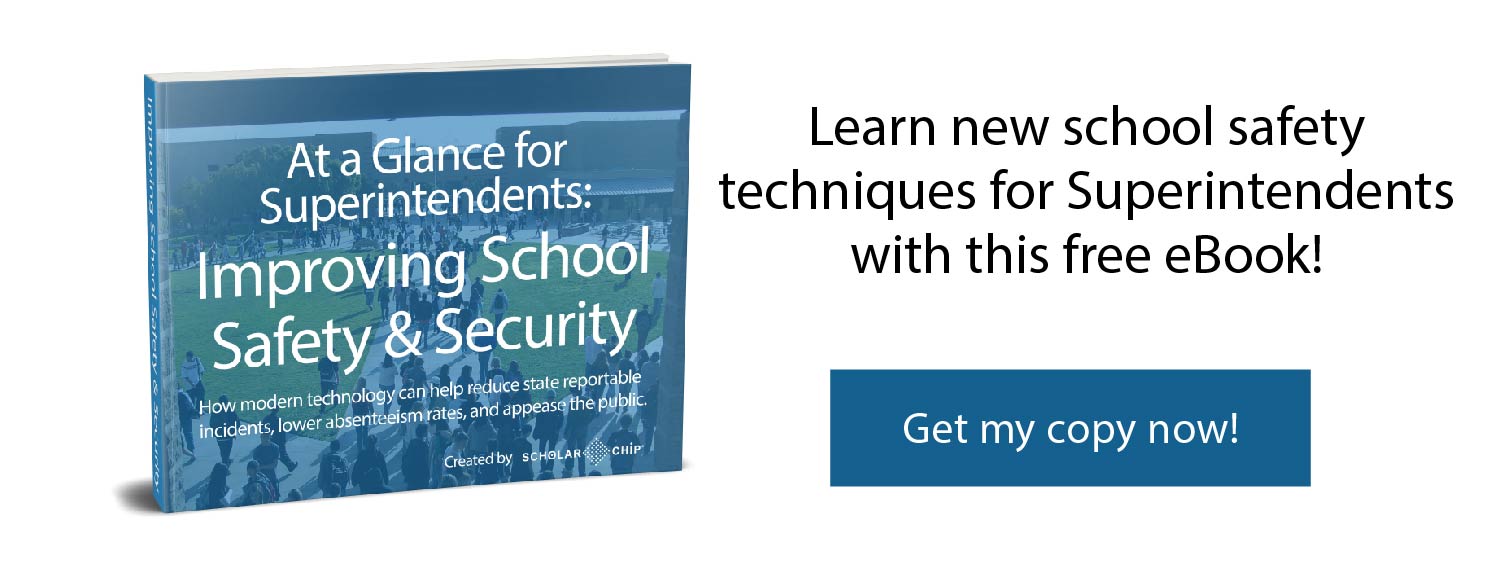In June 2018, the Green Bay School District applied for and was awarded an $835,092 school safety grant from the Wisconsin Department of Justice. The funds will be used to create a more effective visitor management system, as well as to develop more secure buildings, classrooms, and offices.
The Green Bay School District is not alone in its mission to improve its district safety. The district also isn’t the only one securing increased school safety grants funding allocated for improved school safety measures. In fact, districts around the country are successfully developing and implementing security plans that earn them funds from local, statewide, or federal grant programs.
States are becoming more aware of the importance behind school safety and what it takes to prepare for incidents. In 2018, Texas Governor Governor Greg Abbott had announced that there will be approximately $120M donated to the Texas public schools for a school safety action plan. The Governor plans to also expand the program statewide as well, in order to identify students with mental health problems.
In addition to Texas, California had opened a grant opportunity for After School Education and Safety, providing funding to increase campus safety after school. The maximum amount given to elementary schools would be $122,850 and $163,800 for middle schools. These are just a few prime examples on how to capitalize on the grant opportunities available.
Here, we’ll discuss how you can secure school safety grants by preparing a complete, effective plan that ticks the boxes required by grantors.
Districts Widely Seeking Grants
Around the country, more states, counties, and even the federal government are rewarding schools that improve their campus safety. While there are millions of dollars in grant money being awarded, schools are typically given these funds based on the effectiveness of their safety plans as outlined in their grant applications.
As an example, the $20 million earmarked by the county of Burlington County, New Jersey for distribution to twenty-one public high schools. To receive this grant money, each school must submit a proposal outlining its plans for improving school safety. These considerations can and should include upgrades like improved access and lockdown procedures, panic alarms, security cameras, and building improvements, among other factors.
Grants Awarded to Districts with Robust Plans for Building Renovations and Visitor Protocols
While there is money available for safety upgrades in schools, grantors want to see well-developed plans for how these funds will be spent. In other words, they don’t want to award school safety grants to districts that will not put these funds to the best use.
Specifically, grantors want to see well-designed plans for improved building safety upgrades and more sophisticated visitor procedures.
Another school in New Jersey, for example, plans to create a hardened vestibule and implement more highly-developed screening processes for the more than 2,000 students and visitors that come to campus daily.
Grantors often have a set of criteria that they want to see in school safety grant applications. Specifically, they are looking for plans that meet actionable criteria. Here are the eight steps to a comprehensive school safety plan, as outlined by the U.S. Secret Service:
- Establish a threat assessment team.
- Create a list of behaviors that are not allowed and if witnessed, require intervention.
- Develop and train personnel to use a central reporting system.
- Consider when law enforcement should be called to intercede.
- Create your threat assessment procedures.
- Develop your list of risk management options.
- Promote safe school climate initiatives that respect mental health, difficulties, and differences.
- Provide training for personnel on the steps outlined above.
Grant applications, then, should outline a district or school’s intention to use the funds received to add to or modify their current safety plans based on these guidelines. While a single grant may not be able to give a district or school enough money to completely overhaul school safety, grantors seek detailed plans that describe the implementation of a comprehensive new plan, from start to finish.
Federal Budget Prioritizes School Safety
After the Marjory Stoneman Douglas High School shooting in February 2018, Congress passed an extensive budget that would offer grants to schools committed to increasing their safety measures. The Consolidated Appropriations Act, passed by Congress in Spring 2018, offers $1.1 billion in matching programs by U.S. Department of Justice through 2028.
These funds can be used for all types of school safety improvements, including more extensive mental health counseling, training of personnel, violence prevention, and school infrastructure.
The Department of Justice (DOJ) has also rolled out a $25 million grant as part of its School Violence Prevention Program (SVPP). While the July 2018 deadline has passed, the guidelines for applying for the grant still apply for future years. Grants may include plans for the following:
- Technology to more quickly coordinate with and call law enforcement in emergency situations.
- Training for law enforcement in school-based crisis situations
- Re-outfitting the building with safety measures like locks, lighting, and visitor access procedures.
- Other measures that the Office of Community Oriented Policing Services believes could improve security.
Aside from these above grants, districts could also search for federal, state, and county safety funding in the following places:
ScholarChip’s Visitor Management System & Smart Card Technology
Now, more than ever, districts need to-the-minute ways to identify on-campus visitors and maintain proper attendance records for recurring students. This need for efficient visitor identification is the reason why the implementation of visitor management systems and Smart ID Cards are so heavily prioritized in school safety grants.
As part of a school safety grant application, consider including ScholarChip.ScholarChip’s Visitor Management System scans visitor’s driver’s license to rapidly determine if they are a security threat such as a sex offender. If anything potentially threatening about the visitor arises, the system will alert the security officer, and/or appropriate school personnel on duty. If the visitor is cleared, the system will then print a ID badge sticker that marks the visitors as cleared to navigate campus. ScholarChip offers many other options for schools to improve their safety, such as Smart ID Cards and providing a behavior management program with ABE. Smart ID Cards help track recurring students and allow or revoke access to specific buildings, and ScholarChip’s ABE program helps eliminate administrative tasks by automating referrals and providing better monitoring toward the students career path.
Developing an effective visitor management policy will not only make your grant application more robust, but will certainly make your campus safer. ScholarChip is an all-in-one platform solution to help reduce school threats and address the important issues surrounding school safety. Data from students, faculty, and stakeholder are leveraged to manage school access, attendance, and behavior management through the platform tools to increase safety and promote the campus climate schools are looking for.
To learn more about how you can secure your grant options and incorporate the proper steps, contact ScholarChip today for a 1-on-1 discussion with our experts.


